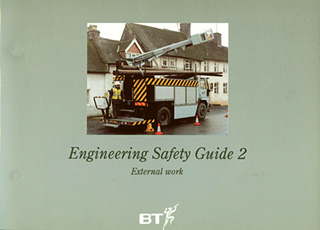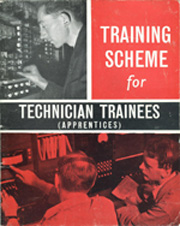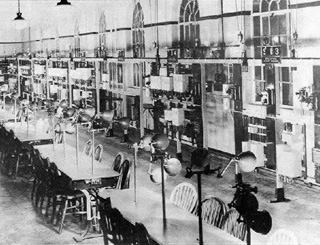 |
Training was always an essential part of any job in the GPO... |
In the General Post Office (GPO) and later the Post Office and BT, on the job training and vocational courses were an important part of the learning process for new recruits into the organisation. Trainee Technicians (Apprentices) were a prime example of candidates for places at a training school...
"For young men with technical interests, the Post Office offers excellent career opportunities. Trainee Technician (Apprentices) are recruited primarily to become highly skilled Technical Officers at an early age, able to deal with the changing technical requirements of their jobs throughout their careers."
Automatic Training School (ATS)Stone
A residential Central Training School was established in Stone, Staffordshire, for specialised aspects of engineering training. It opened on 30th September 1946, offering just two courses in auto exchange work.
Stone has its origins in the ATS (Automatic Training School) which began in 1924 in the King Edward Building in London. By 1930 the school had moved to the Post Office Research Station at Dollis Hill. Training was suspended on the outbreak of war. After World War II, there was a need for training the many new engineers, who were needed, as the telephone network began to expand. Regional Training Centres (RTCs), such as those at Bletchley, fulfilled a part of the learning requirements for new apprentices. However, it was thought that a Central Training School (CTS) would better be able to meet the needs of a larger number of students, for the specialised instruction of engineering work.
The CTS was developed close to Yarnfield, a village 3 miles west of Stone in Staffordshire. Three hostels, originally built for employees of the Royal Ordnance Factory were converted for Post Office use. The buildings, named after famous admirals were:-
|
| Bletchley RTC | |
 |
In the Home Counties Region, it was proposed to set up a residential Training School for all sections of Post Office Personnel. Bletchley, with its central location was ideally suited to the requirements of the Post Office, which at that time was still a government department. Thus in 1948, the local training centres began to transfer to the Park. |
| Safety Guides | |
 |
Instructions on how to work safely have always been produced for all staff. |
| A Job Worth Doing | |
 |
In 1973 the BBC made a series of films entitled "A Job Worth Doing", which in one programme looked at jobs in the Post Office... |
 |
 |
These booklets encouraged school leavers to apply for jobs in Post Office Telecommunications. |
Booklets:
Engineering Safety Guide 2 - External Work (A6645). Produced by BT Safety Unit June 1992.
A Career in Communications Engineering: PA69 2/73 Post Office Telecommunications. Printed in England by The Artisan Press Ltd., Anstey, Leicester. Cover: The Television Network Switching Centre Control Room at the Post Office Tower, London.
Training Scheme for Technician Trainees (Apprentices) - Published by Post Office Engineering Union, Greystoke House, Hanger Lane, London, W5.
All logos and trade marks are the property of their respective owners and are used on the Light Straw site(s) for review only. Students and researchers are recommended to make their own independent enquiries as to the accuracy of the information contained therein.
